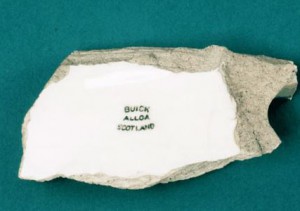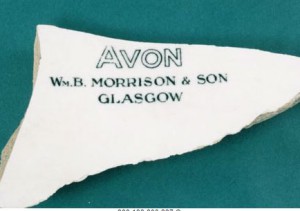John Shanks was born in 1826, in Paisley, and, after serving an apprenticeship with plumbers Wallace and Connell, went into business in the town as a plumber in his own right. However, despite initial success, this was not how he was to make his name. After opening a second branch in Barrhead, which was opposite South Church on Barrhead, and closing his original premises on Paisley’s High St, Shanks established a brass foundry above his Barrhead shop. Now Shanks was able to take advantage of the rapid improvement of the sewer system that was occurring in the area. This was to be the beginning of his long and industrious career in Barrhead.
After initial success, Shanks erected a larger base of operations which he called the Tubal Foundry in 1866. This eventually became a site of great importance to the people of Barrhead, as a centre of industry in the area and an employer of many local people. The site of the Tubal Works was near where Barrhead Library is now, and it is marked by a blue plaque as part of the town’s heritage trail.
Although Shanks died in 1895, his business remained in his family for a century, initially being taken over by his son, also named John.
Indeed, under the stewardship of his successors, Shanks went from strength to strength, opening another factory at the end of Victoria Road: the Victoria Works.
Such was the quality of Shanks goods the company won many awards for its designs, which in turn brought the company the reputation it deserved.
Source for above
******************************
*******************************
Timeline – source Grace’s Guide
Shanks and Co, makers of sanitary ware, of Tubal Works, Barrhead, Glasgow
John Shanks (1825–1895), born in Stonefield, Paisley, Renfrewshire, on 22 December.
Apprenticed as a plumber with Wallace and Connell, Glasgow
1851 started his own business at 32 High Street, Paisley, as a plumber and gas fitter.
1853 Opened a branch in Lowndes Street, Barrhead, before moving to larger premises in Main Street
1855 closed the Paisley shop; joined by his younger brother Andrew Ferrier Shanks.
1860 Shanks established a brass foundry and finishing shop in the upper floor of the premises so he could manufacture water closets; bought cast-iron components from George Smith and Co of Glasgow, and earthenware closet basins came from J. M. P. Bell of Glasgow.
1863 Patent on a water closet with a plunger valve to release the waste and a ball cock to refill the basin.
1866 Shanks built a new brass foundry at Barrhead, called the Tubal Foundry.
1871 patent for a combined supply, waste, and overflow fitting for a bath; another for an overhead water closet cistern.
1873 To reduce his dependency on Smith and Co., Shanks started his own iron foundry.
1875 declared bankrupt; Andrew took over the firm.
1878 Shanks had resumed active business. A new partnership was organised with the two brothers having equal shares. Appointed an agent in London; showrooms were established at 46 Cannon Street.
1877 patent on sanitary ware, water closets and cisterns, and cast-iron bath with a shelf incorporating the waste and overflow, and lavatory washbasins.
1881 Patent on a bath tap with a flexible tube and perforated rose for providing a shower or spray bath; another on a syphonic water closet cistern.
1882 Patent on a mixer tap.
1885 Patent on a valve closet with two discharge valves for use on ships.
1884 – 92 Three patents for urinals.
1892 Patent on a close coupled water closet – arguably his most important and original contribution to the development of the water closet.
1894 Shanks patented a jet syphon closet that flushed the closet using a jet to charge a syphon that drew the waste from the basin instead of relying on the sheer force of the flush. Shanks was just ahead of two chief main rivals with his patent: Thomas W. Twyford and George Jennings patented their versions a few months later.
1895 John Shanks died; his son John and nephew William Shanks continued the business.
1898 The company was registered on 2 December, to take over business of sanitary engineers, of the firm of the same name.
1902 Established its own fireclay works — the Victoria Pottery
1914 Manufacturers of sanitary appliances. Employees 1,000.
1918 acquired the earthenware manufacturers J. and M. Craig of Kilmarnock.
1962-5 Acquired Southbrook Potteries Ltd, J and R Howie Ltd, George Howson and Co Ltd of Hanley, all makers of sanitaryware.
1969 End of manufacture of cast iron baths.
1969 Merged with Armitage to create Armitage Shanks.
*************************









